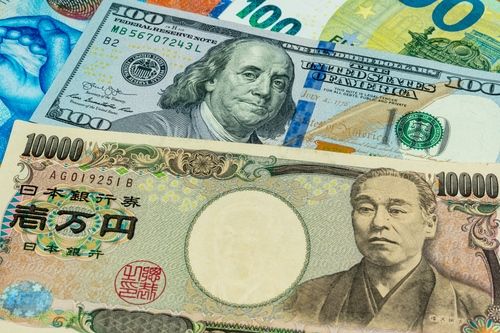
USD/JPY flatlines around 143.20 in Wednesday’s early Asian session.
Investors raise their bets on a jumbo rate cut from the US Fed in November.
The BoJ Governor signals no rush to raise rates further.
The USD/JPY pair trades flat near 143.20 despite the weaker US Dollar (USD) during the early Asian session on Wednesday. However, the rising expectation of a jumbo rate cut by the US Federal Reserve (Fed) in November might continue to weigh on the pair.
Fed Governor Michelle Bowman said on Tuesday that key measures of inflation remain "uncomfortably above" the 2% target, warranting caution as the Fed proceeds with cutting interest rates. However, she preferred the Fed to lower by a quarter percentage point, more in line with the traditional moves at the central bank.
Fed Governor Adriana Kugler is set to speak later on Wednesday. The release of the US Personal Consumption Expenditures (PCE) Price Index for August will be in the spotlight on Friday. Any dovish comments from Fed officials and signs of softer inflation could undermine the USD against the Japanese Yen (JPY).
Data released by the Conference Board on Tuesday showed that the US Consumer Confidence Index fell to 98.7 in September from a revised 105.6 in August. This figure registered the biggest decline since August 2021.
On the other hand, the speculation that the Bank of Japan (BoJ) was in no rush to raise interest rates further might drag the JPY lower and cap the downside for USD/JPY. The BoJ Governor Kazuo Ueda said on Tuesday that the central bank can afford to spend time watching developments in financial markets and overseas economies as it sets monetary policy.
Japanese Yen FAQs
The Japanese Yen (JPY) is one of the world’s most traded currencies. Its value is broadly determined by the performance of the Japanese economy, but more specifically by the Bank of Japan’s policy, the differential between Japanese and US bond yields, or risk sentiment among traders, among other factors.
One of the Bank of Japan’s mandates is currency control, so its moves are key for the Yen. The BoJ has directly intervened in currency markets sometimes, generally to lower the value of the Yen, although it refrains from doing it often due to political concerns of its main trading partners. The current BoJ ultra-loose monetary policy, based on massive stimulus to the economy, has caused the Yen to depreciate against its main currency peers. This process has exacerbated more recently due to an increasing policy divergence between the Bank of Japan and other main central banks, which have opted to increase interest rates sharply to fight decades-high levels of inflation.
The BoJ’s stance of sticking to ultra-loose monetary policy has led to a widening policy divergence with other central banks, particularly with the US Federal Reserve. This supports a widening of the differential between the 10-year US and Japanese bonds, which favors the US Dollar against the Japanese Yen.
The Japanese Yen is often seen as a safe-haven investment. This means that in times of market stress, investors are more likely to put their money in the Japanese currency due to its supposed reliability and stability. Turbulent times are likely to strengthen the Yen’s value against other currencies seen as more risky to invest in.
* The content presented above, whether from a third party or not, is considered as general advice only. This article should not be construed as containing investment advice, investment recommendations, an offer of or solicitation for any transactions in financial instruments.






